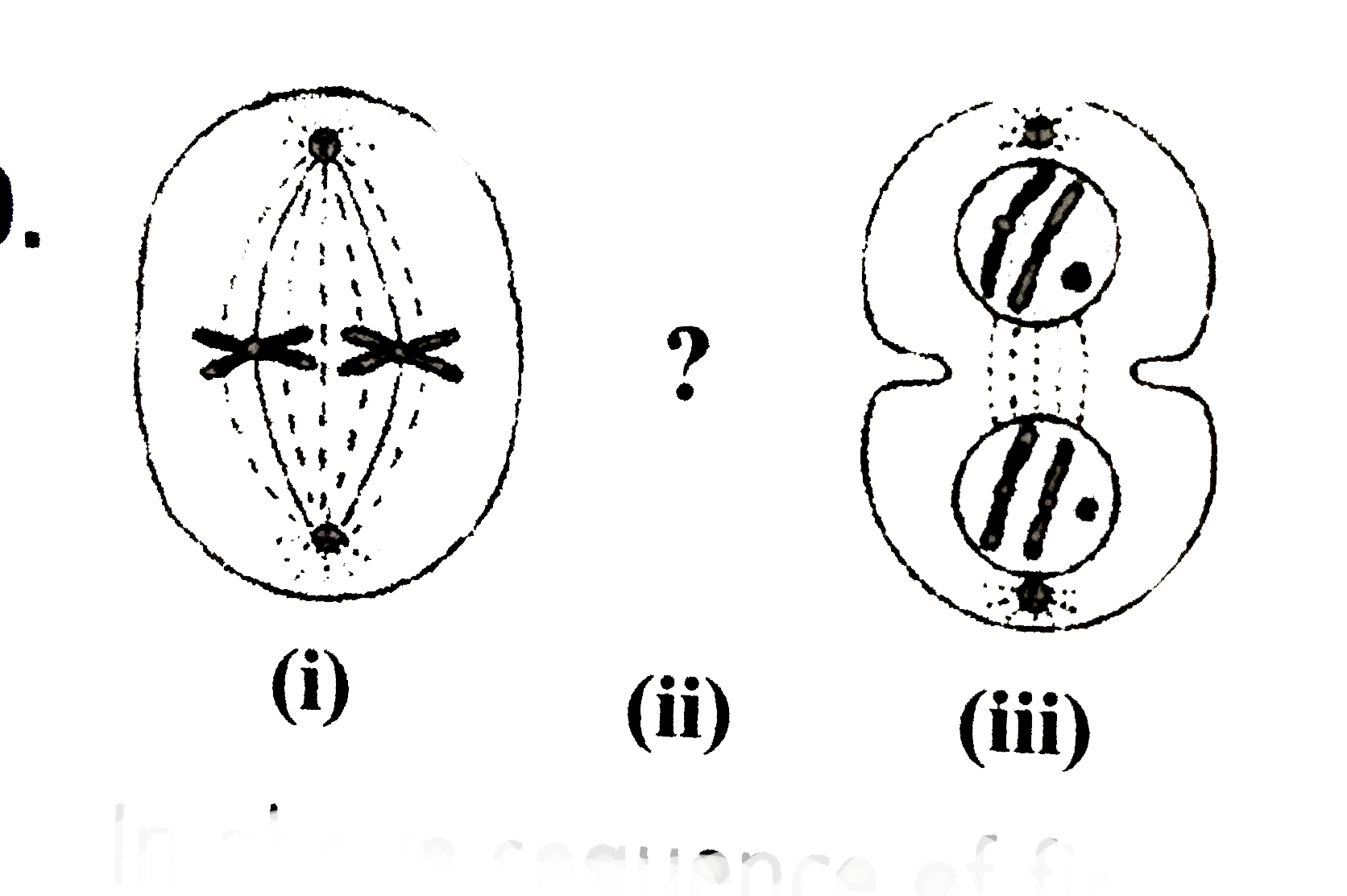A teacher was trying to show the different stages of a type of cell division to the students. At a particular stage , it was observed that the chromosomes were separating but there was no splitting of centromeres. This stage would be
metaphase I
metaphase II
anaphase I
anaphase II
The correct Answer is:C
To solve the question, we need to identify the specific stage of cell division where chromosomes are separating but the centromeres are not splitting. Here’s a step-by-step breakdown of the reasoning:
Step 1: Understand the Stages of Cell Division
Cell division can occur through two main processes: mitosis and meiosis. Each of these processes has distinct stages.
Step 2: Identify the Relevant Stages
In meiosis, there are two rounds of division: meiosis I and meiosis II. Each of these has several phases:
- Meiosis I: Prophase I, Metaphase I, Anaphase I, Telophase I
- Meiosis II: Prophase II, Metaphase II, Anaphase II, Telophase II
Step 3: Analyze the Stages
- Metaphase I: Chromosomes line up at the equatorial plane, and centromeres are not splitting.
- Metaphase II: Similar to metaphase I, but involves sister chromatids.
- Anaphase I: Here, homologous chromosomes are pulled apart towards opposite poles, but the centromeres do not split.
- Anaphase II: Centromeres split, and sister chromatids are pulled apart.
Step 4: Focus on Anaphase I
The key detail in the question is that chromosomes are separating without the centromeres splitting. This description matches Anaphase I of meiosis, where homologous chromosomes are separated, but the centromeres remain intact.
Conclusion
Based on the analysis, the stage where chromosomes are separating without the splitting of centromeres is Anaphase I.
Final Answer
The stage observed is Anaphase I.
---
Cell division can occur through two main processes: mitosis and meiosis. Each of these processes has distinct stages.
In meiosis, there are two rounds of division: meiosis I and meiosis II. Each of these has several phases:
- Meiosis I: Prophase I, Metaphase I, Anaphase I, Telophase I
- Meiosis II: Prophase II, Metaphase II, Anaphase II, Telophase II
- Metaphase I: Chromosomes line up at the equatorial plane, and centromeres are not splitting.
- Metaphase II: Similar to metaphase I, but involves sister chromatids.
- Anaphase I: Here, homologous chromosomes are pulled apart towards opposite poles, but the centromeres do not split.
- Anaphase II: Centromeres split, and sister chromatids are pulled apart.
The key detail in the question is that chromosomes are separating without the centromeres splitting. This description matches Anaphase I of meiosis, where homologous chromosomes are separated, but the centromeres remain intact.
Based on the analysis, the stage where chromosomes are separating without the splitting of centromeres is Anaphase I.
The stage observed is Anaphase I.
Topper's Solved these Questions
Similar Questions
Knowledge Check
In which stage rate of cell-division decreases ?
AMorulaBGastrulaCBlastulaDZygoteCentromere split in which stage of cell division
AAnaphaseBTelophaseCprophaseDMetaphase
In above sequence of figures showing different stages of cell division, the missing stage (ii) isA B
B C
C D
D
During different stages of cell division, cells show structured____ in place of the nucleus.
View SolutionDraw a diagram showing different stages of projection for artifical satellite.
View SolutionColchicine arrests which of the following stage of cell division?
View SolutionThe given figure represents various stages of cell division.

View SolutionWhat is the stage of mitosis when chromosomes separate and move towards poles ?
View Solution
